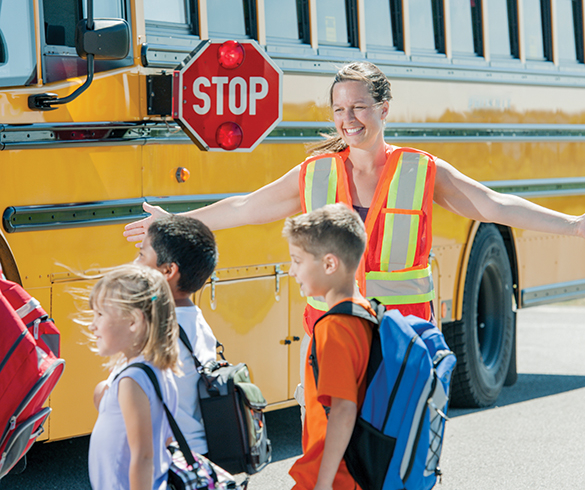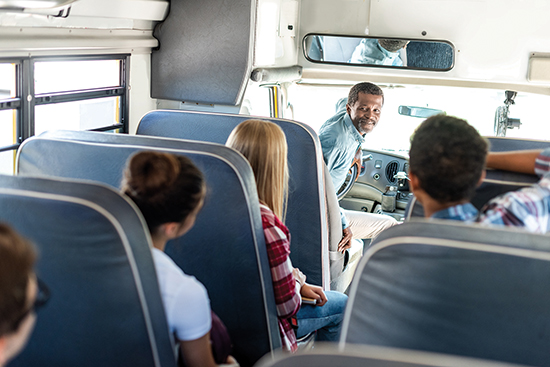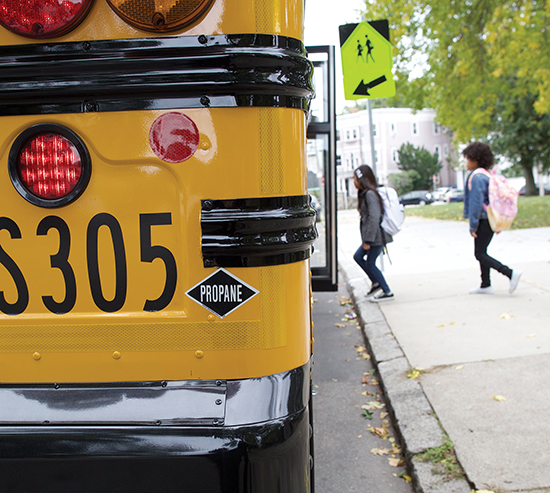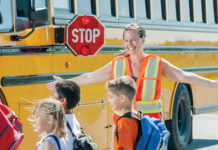
Back-to-School Bus Safety
Another school year means millions of children across the country are boarding buses at the beginning and end of each day, and it provides an appropriate opportunity for parents, teachers, school administrators and students themselves to practice and enforce safety guidelines in and around the school bus.
Consider these tips from the experts at the Propane Education & Research Council (PERC) to help keep children safe before bus rides, during travel and after exiting the vehicle.
Before the Bus Arrives
- Ensure backpacks are packed securely so papers and other items don’t scatter as the bus approaches.
- Create a morning routine that puts kids at the bus stop five minutes before the scheduled pickup time. This helps avoid a last-minute rush, when safety lessons are easily forgotten, and ensures kids are safely in place for boarding.
- Encourage children to wear bright, contrasting colors so they can be seen easier by drivers.
- Instruct children to walk on the sidewalk. If there is no sidewalk, advise them to stay out of the street, walk single-file, face traffic and stay as close to the edge of the road as possible.
- Walk young children to the bus stop or encourage kids to walk in groups. There is safety in numbers; groups are easier for drivers to see.
- If kids must cross a street, driveway or alley, remind them to stop and look both ways before crossing.
- Verify the bus stop location offers good visibility for the bus driver; if changes are needed, talk with nearby homeowners or school district officials to implement changes. Never let kids wait in a house or car, where the driver may miss seeing them approach the bus.
- Remind children that the bus stop is not a playground. Balls or other toys could roll into the street and horseplay can result in someone falling into the path of oncoming traffic.
- Instruct children to stay at least three steps away from the road and allow the bus to come to a complete stop before approaching it.

On the Bus Ride
- When boarding the bus, items can get bumped and dropped. Caution children that before picking anything up, they should talk to the driver and follow instructions to safely retrieve their possessions.
- Teach safe riding habits: stay seated with head, hands and feet inside at all times; keep bags and books out of the aisle and remain seated until the bus stops moving.
- Remind kids that just like when riding in cars, loud noises are off limits so they don’t distract the driver. That includes cellphones and other electronic devices; instruct children to put them on mute or use headphones.
Leaving the Bus
- Remind children to look before stepping off the bus. If they must cross the street, teach them to do so in front of the bus by taking five big steps (approximately 10 feet) away from the front of the bus, looking up and waiting for the driver to signal that it is safe.
- For parents who meet their kids at the bus, remember that excited kids may dart across the street. Eliminate the risk by waiting on the side of the street where kids exit the bus.
- Make the bus ride part of your daily “how was school?” discussion. Encourage kids to talk about the things they see and hear on the bus so you can discuss appropriate behaviors and, if necessary, report any concerns to school administrators.
- As bullying is prevalent and buses are no exception, ask children to tell you about any bullying they observe, whether against another child or themselves, and talk about how to shut down bully behaviors.

Rethink Your Child’s Ride
While children and their parents can take many steps toward enhanced safety in and around buses, school districts also have unique opportunities to improve their transportation.
More than 900 school districts in 48 states across the country are operating propane-powered school buses rather than other fuels like diesel and gasoline. Alternative fuels, such as propane, offer multiple benefits for school districts and students alike because propane buses reduce harmful emissions, save money and create a safer ride for students riding school buses.
This school year, more than 1 million students will ride a propane school bus to school every day.
Parents and community leaders can engage their local school districts about the benefits propane buses provide:
Cleanliness
While diesel exhaust is classified by the World Health Organization as a carcinogen, propane buses don’t expose students to the same harmful emissions. Propane school bus engines lower greenhouse gas emissions to near-zero levels, which improves air quality and eliminates concerns about breathing-related health issues.
Cost Savings
With school budgets continually at risk of losing funding, parents and schools can think outside the box to target extra savings. Over the life of the vehicle, propane school buses cost less compared to other fuels for a variety of reasons, including lower fuel costs and more manageable maintenance. Those lower costs on oftentimes large expenses can instead be used to fund student-based programs.
Better for Students
Propane buses are also noticeably quieter than alternatives. Noise level and safety go hand-in-hand when considering that a quieter ride allows drivers to focus more on the road as student conversations are less likely to reach higher levels in an effort to be heard over engine noise. With less noisy distractions, drivers are able to hear what’s happening outside the bus – from horns and sirens to train whistles and more – and keep their riders safe. Additionally, the less distracting engine noise may allow drivers to more easily notice and address bullying behavior on the bus.
Explore the switch from diesel buses to cleaner alternatives by downloading resources available at BetterOurBuses.com, and consider starting a discussion with your children’s school district.
Visit BetterOurBuses.com for more school bus safety tips
Main and bus driver photos courtesy of Getty Images
Source:
Propane Education & Research Council













